Sybil Craig was the final female Australian official war artist appointed during the Second World War.
During September 1942, as the Kokoda campaign began to turn in the favour of Allied forces, Prime Minster John Curtin proclaimed that there was a critical need for at least 64,000 women to be employed in factories by early 1943. The more women who could be engaged in war industries, the more men could be released for the armed forces.
Sybil Craig was the third and final female Australian official war artist appointed during the Second World War. She accepted the appointment in March 1945, proposing to focus on war industry workers. She took the tram daily from Caulfield to Maribyrnong to record the work of male and female employees at the Commonwealth Explosives Factory, and later at the Commonwealth Ordnance Factory.
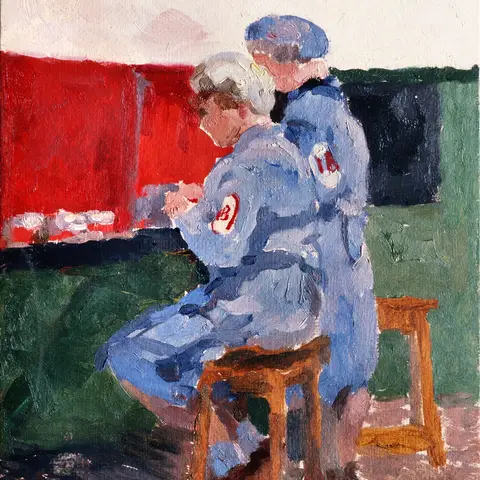
Sybil Craig, Inspection branch, Army (Detonator Section, Commonwealth explosives factory, Maribyrnong), 1945, oil on cardboard, framed: 40.8 x 35.6 x 3.8 cm
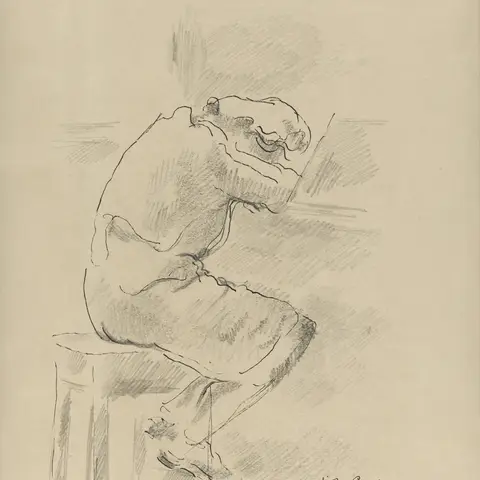
Sybil Craig, Inspectress takes a rest at tea time, 1945, pen and ink with pencil on paper, 24 x 18 cm
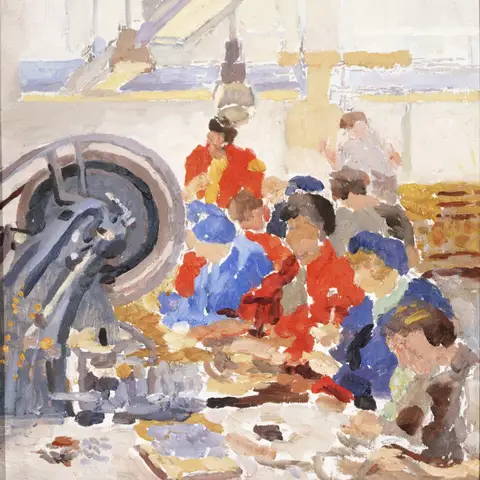
Sybil Craig, Impression: workers and capping machine, 1945, oil on canvas on cardboard, framed: 62.3 cm x 53.1 cm
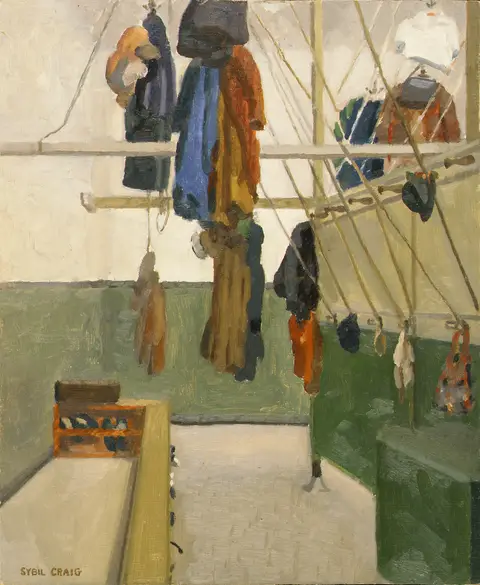
Sybil Craig, Women’s change room (High Explosive Section, Commonwealth Explosives Factory, Maribyrnong), 1945, oil on hardboard, 42 x 35 cm
Female employment in factories steadily increased. These male-dominated industries were not ready for the swift transition of their workforce.
Rapid adaptations were made to accommodate the new female workers, including the installation of “austerity” female amenities.
Craig painted one in Women’s change room.
This painting is perhaps emblematic of the shift in gender roles in wartime Australia. The hoisted clothes can be seen as a symbolic shedding of domesticity.
The factory work performed by men and women was often physically demanding and dangerous. Long hours and poor working conditions led to accidents. Women’s fashion evolved to take into account new workplace hazards. Flowing dresses were replaced with pants, and long hair was contained under hats or scarfs, all to lessen the risk of getting snared by the machinery.
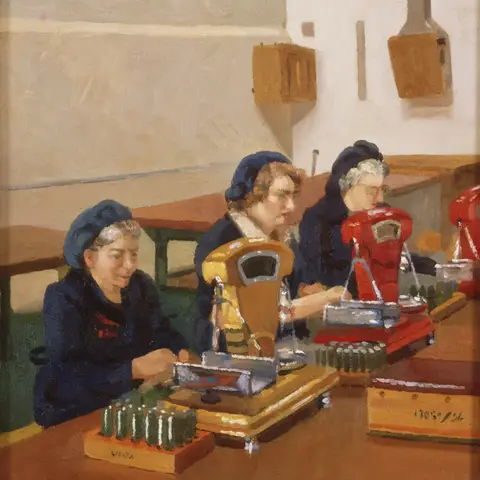
Sybil Craig, Weighing cordite, Commonwealth explosives factory, Maribyrnong, 1945, oil on canvas on plywood, 46 cm x 40.5 cm
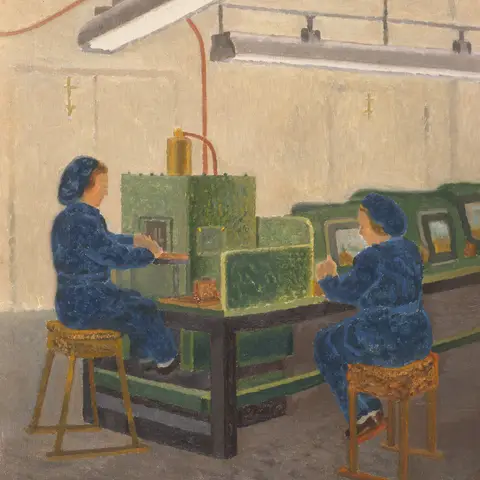
Sybil Craig, Closing and flattening bay (Detonator Section, Commonwealth explosives factory, Maribyrnong), 1945, oil on canvas on plywood, 45.4 cm x 40.5 cm
When the Japanese surrender was announced in August 1945, there were 598,300 Australian men and women engaged in the armed forces. Adding the war industry workers, it was estimated that one million Australians were seeking “peace occupations”. Veterans who had been employed before they enlisted were entitled to resume their jobs. As a result, many female factory workers lost their jobs, returning to what was referred to as “domestic duties”.
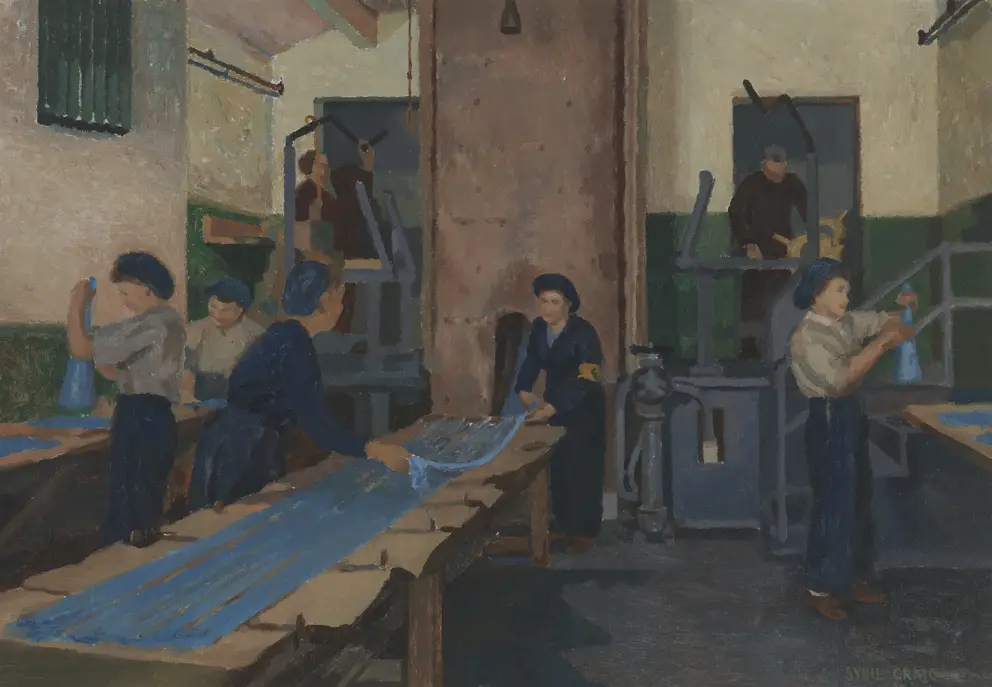
Sybil Craig, Making cordite, Commonwealth Explosives Factory, Maribyrnong, 1945, oil on canvas board, unframed: 35.6 x 51 cm
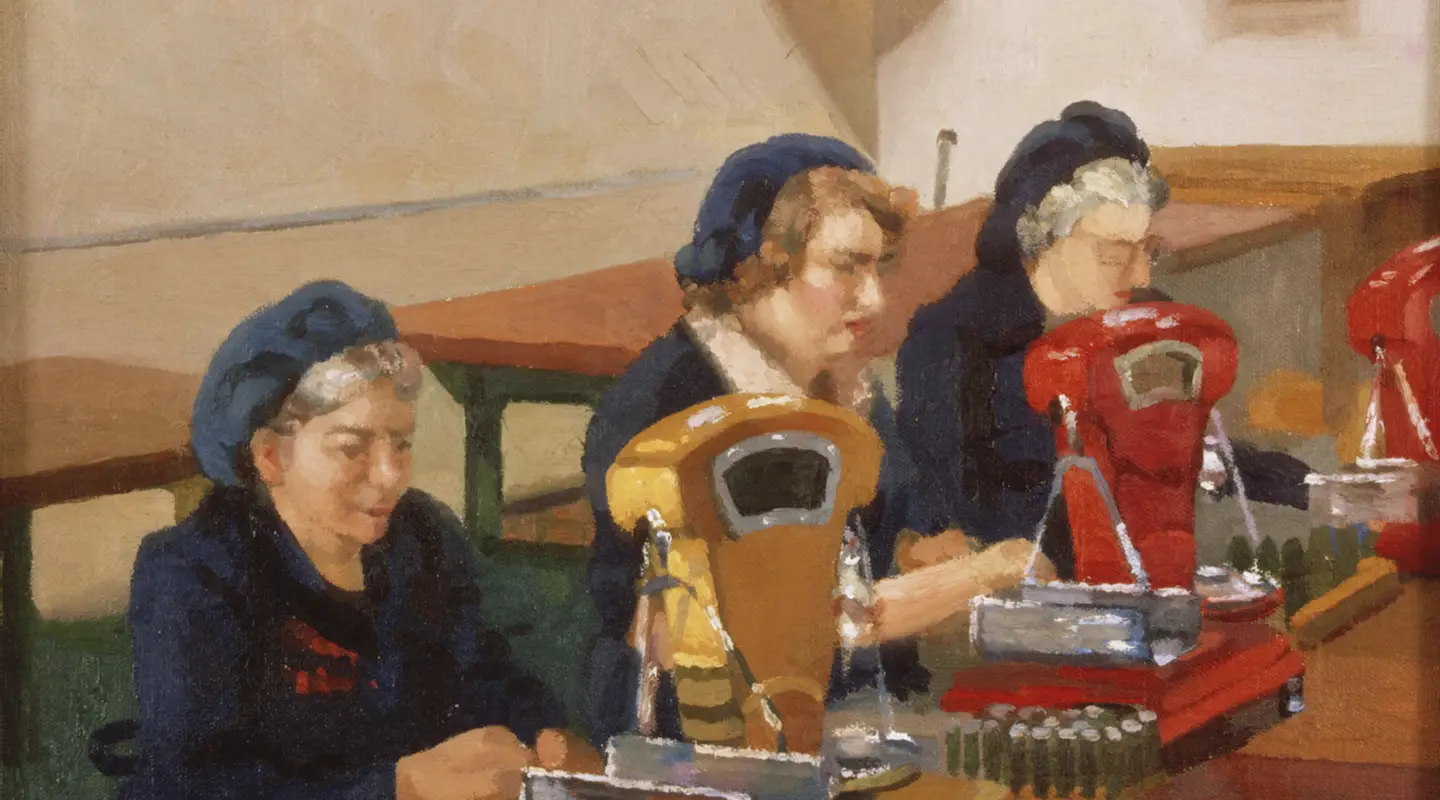
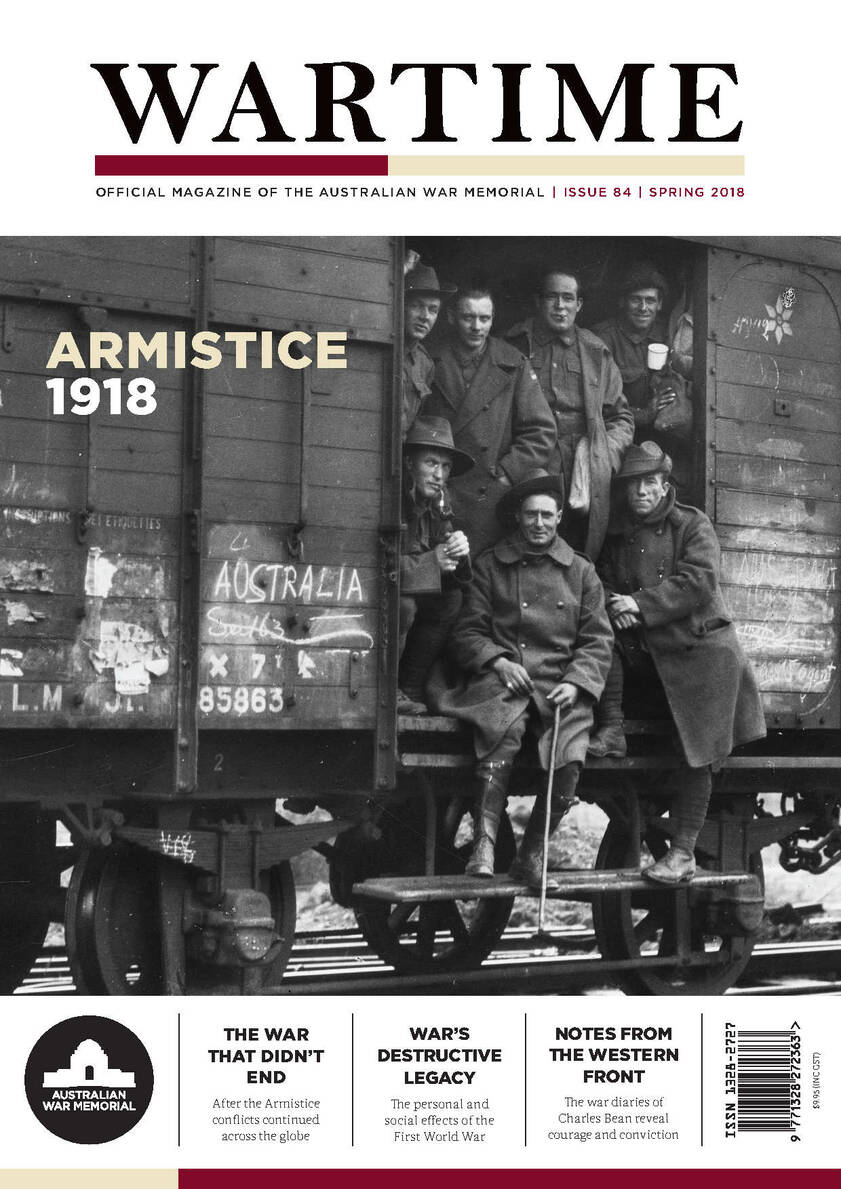
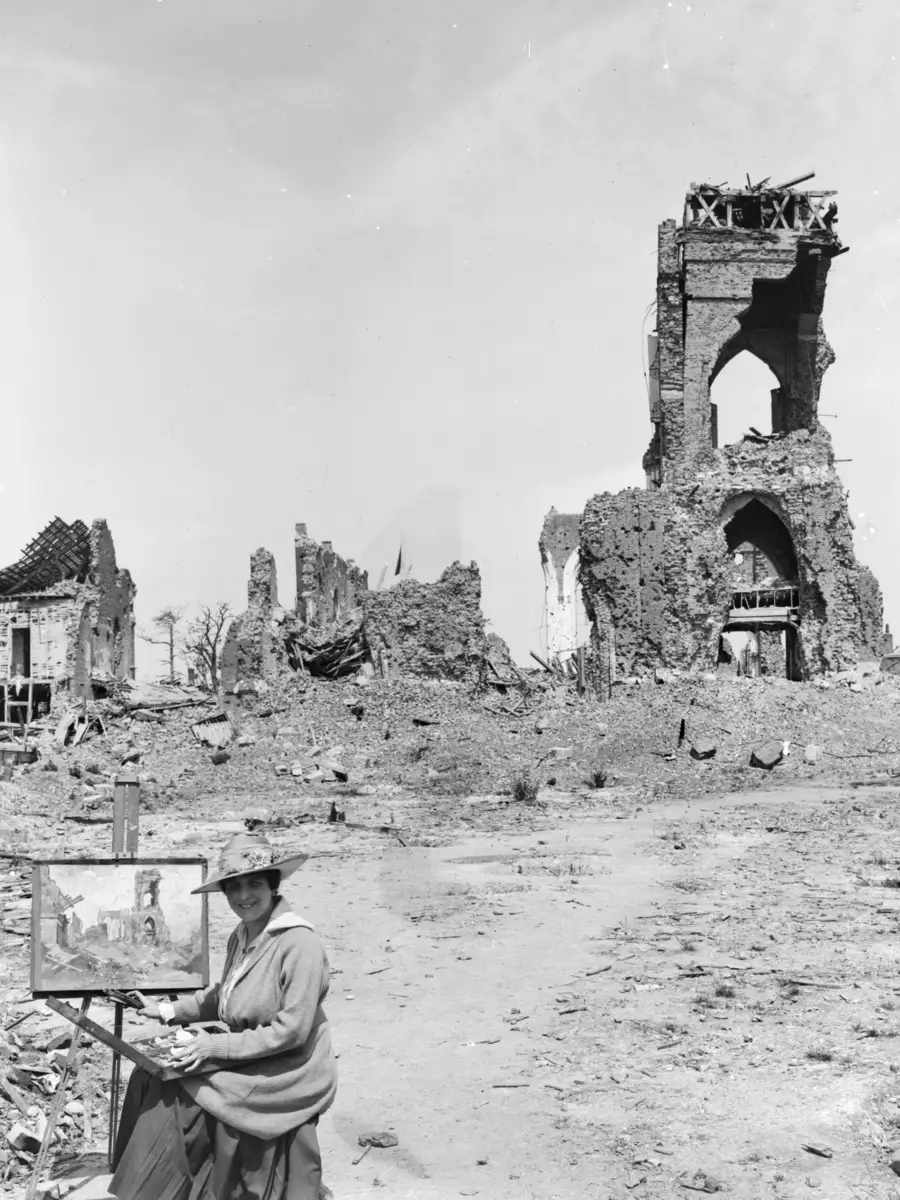
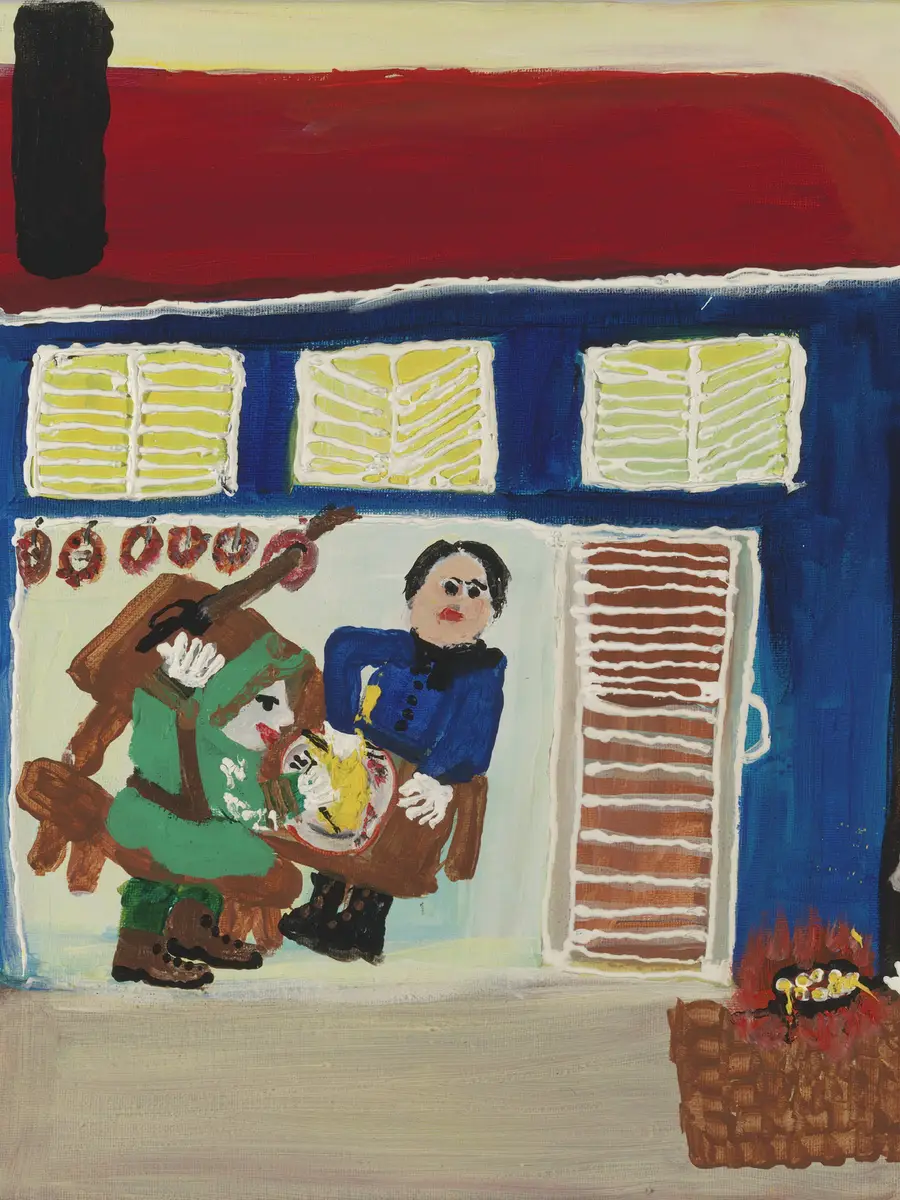
![Movie still from They serve that men may fly [AWM F10244]](/sites/default/files/styles/rollup/public/images/2025-03/40-f10244-00-22-55-23.jpg.webp?itok=hWkkw2gv)